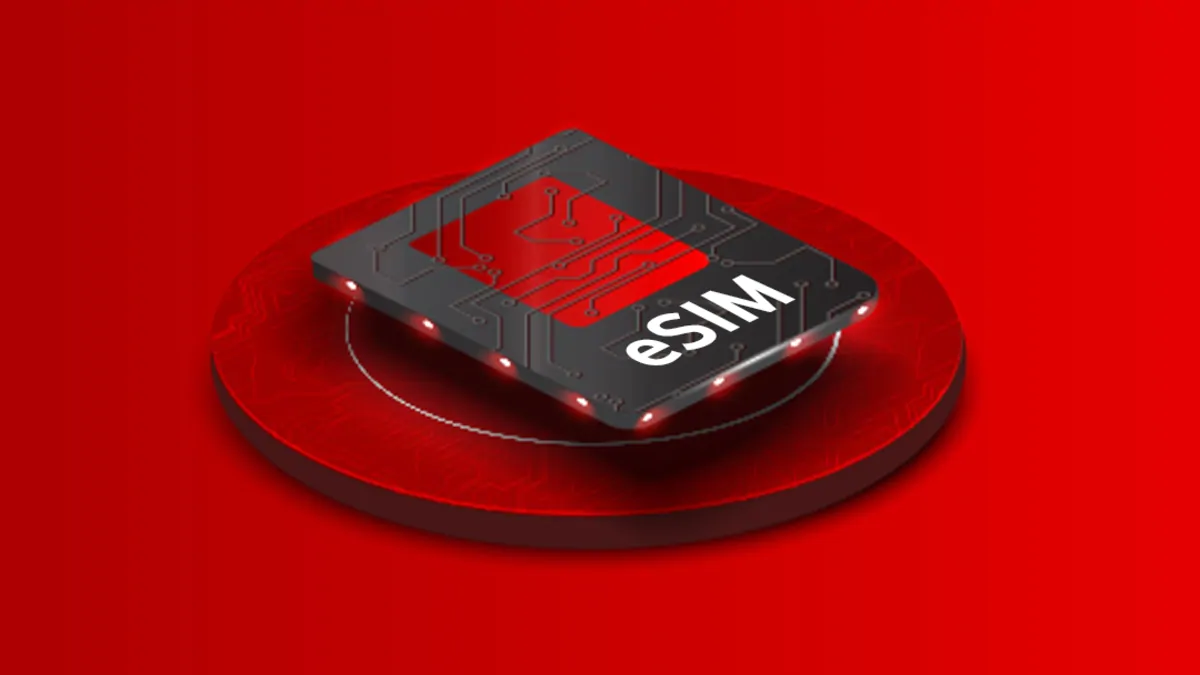According to Juniper Research, global eSIM deployments will increase by 170% between 2021 and 2025. While the consumer sector will account for 94% of all eSIM installations, industrial eSIM adoption, particularly in logistics, manufacturing and oil and gas, is also expected to intensify, increasing from 28 million in 2021 to 116 million in 2025.
Indeed, a business case can be made for a shift to eSIM. If you are an original equipment manufacturer or an enterprise that integrates machine-to-machine (M2M) capabilities into your products, consider contacting your SIM card provider to inquire about the possibility of switching to eSIM.
1. Create Better Product Designs and Unlock New Business Opportunities
Bigger isn’t always better, particularly with gadgets, sensors and other M2M devices. For instance, mobile phones have evolved from being as large as bricks to half the size of a typical hand span.
Of course, mobile phones grew bigger again as they transitioned into all-around intelligent devices designed to perform a multitude of tasks. Mobile phones need an optimal screen size to enjoy video streaming, web browsing, photography, and productivity applications.
M2M device manufacturers also often have size constraints, especially when designing wearable telemetry equipment such as blood pressure and blood sugar monitors. No one wants to wear a monitor so big it impedes his daily living activities. For some, it is a matter of preference, particularly for those who dislike personal sensors that are too conspicuous.
The size constraint may be more relaxed when it comes to M2M devices meant for industrial applications. However, smaller is always better, even with such gadgets.
The advent of eSIM, particularly its embeddable chip form factor, means a new frontier for M2M device manufacturers. Removing the physical SIM card slot frees up valuable space. This can be enough to spur smaller, lighter, thinner, and more streamlined product designs.
Likewise, the removal of the physical SIM card slot can lead to new products. M2M device manufacturers that have so far refrained from building devices with cellular data connectivity because of the SIM card slot requirement can start giving cellular device production a second look.
For now, eSIM chips are not small enough to be used in biological telemetry systems. Even so, the move to lighter, smaller and thinner M2M eSIM devices is a step in the right direction.
2. Simplify Manufacturing and Streamline Supply Chain Activities
The traditional SIM card can contain only one subscriber identity module. Thus, conventional cellular M2M devices must be manufactured with an empty physical SIM card slot.
Integrators (e.g., car manufacturers) may also have to leave the SIM card slot empty, so end-users can insert a SIM card that works with their local network operators. This complicates design requirements. M2M equipment SIM card slots must remain accessible even after integration.
Where this is not possible or practical, integrators may furnish their products with SIM cards before distribution or instruct the factory to insert them during manufacture. In either case, they will have to lock products to specific regions to ensure cellular service and keep an inventory of their SIM cards. They must also have existing contracts and agreements with network operators and carriers in their markets.
The eSIM specification overcomes this challenge and simplifies manufacturing logistics for device manufacturers and integrators. An eSIM may be provisioned over the air and can store multiple SIM profiles. Thus, it doesn’t have to be tied to a single network operator.
This means manufacturers and integrators don’t need cellular service provision contracts before manufacturing or integrating eSIM-enabled M2M devices. By installing an eSIM during manufacture or integration, manufacturers and integrators can ensure cellular connectivity or service for their products right out of the box.
More importantly, manufacturers and integrators do not have to keep track of multiple SIM stock-keeping units. They can use a single-SKU eSIM with their cellular M2M devices. This works because eSIMs are practically a blank slate that can later be provisioned with a SIM profile from any network. Consequently, manufacturers and integrators don’t need to keep and manage complicated SIM card records either.
3. Improve product quality and security
Traditional M2M devices have a SIM card slot that leaves them vulnerable to moisture, dust and other potential contaminants. In contrast, since an eSIM is embedded during the manufacturing process, eSIM-enabled cellular M2M devices have hermetic seals that render them air-tight. For this reason, eSIM M2M devices often have long serviceable life expectancies.
Traditional SIM M2M devices can also be more insecure. Someone can remove the SIM card from a device to render it useless and untraceable. A hacker can also replace the SIM card on a device to hack into its interconnected system. eSIM devices are less susceptible, although not totally impervious, to such issues.
Time to Switch to eSIM
eSIM can do what SIM cards have been doing, but better. A mobile user will find the ability to change networks on the fly and get SIM provisioning remotely very useful. Likewise, a plastic pipe manufacturer in the UAE should find eSIM-powered M2M devices useful for asset tracking and control.
By switching to eSIM, cellular M2M device manufacturers and integrators can improve their product design, unlock new business opportunities, simplify their logistics, streamline their supply chain, and improve product quality and security.
